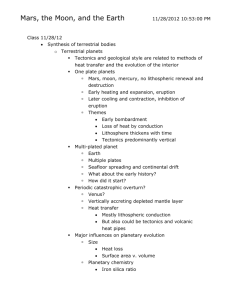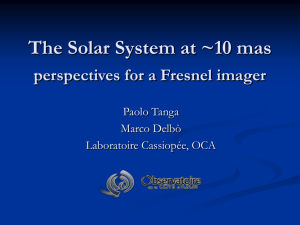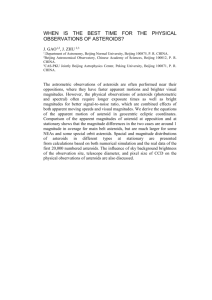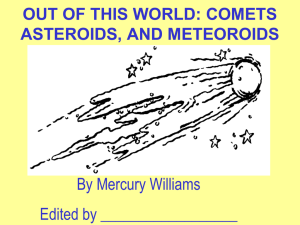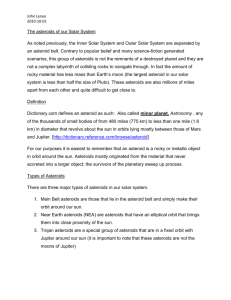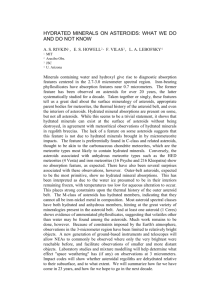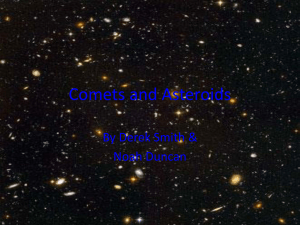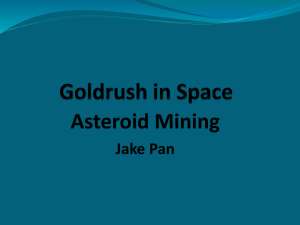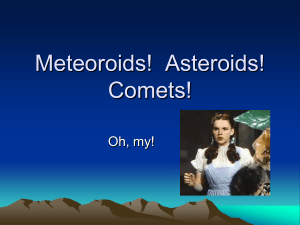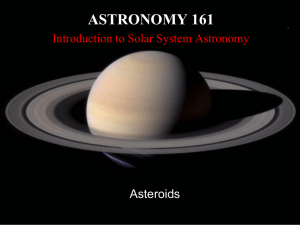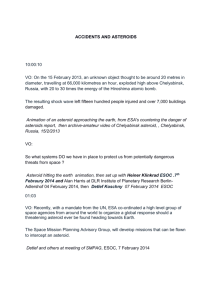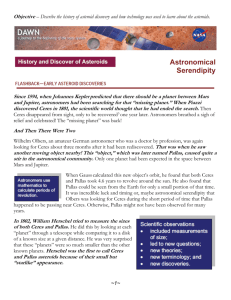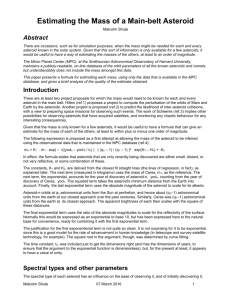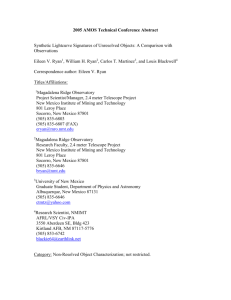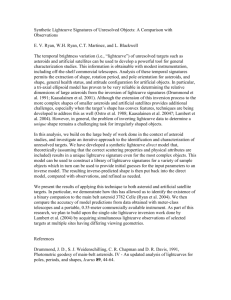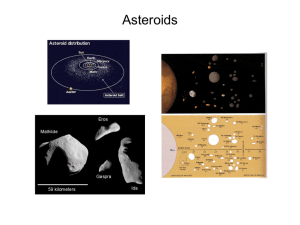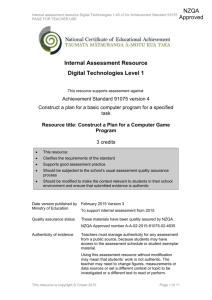Asteroids-2 - pita
advertisement
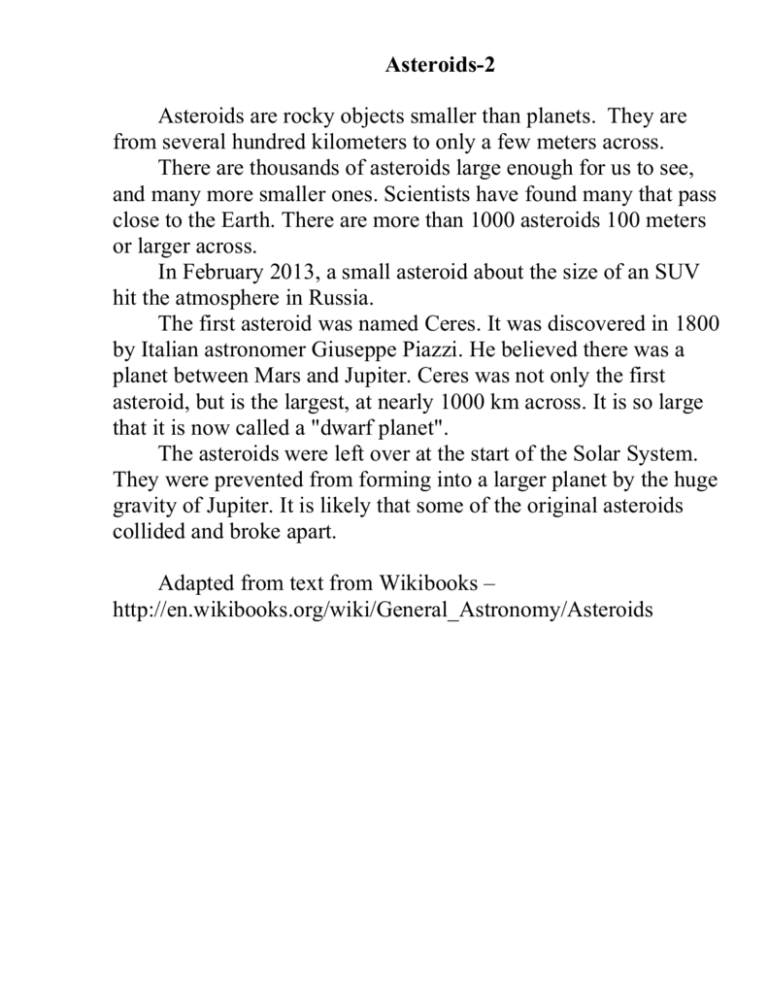
Asteroids-2 Asteroids are rocky objects smaller than planets. They are from several hundred kilometers to only a few meters across. There are thousands of asteroids large enough for us to see, and many more smaller ones. Scientists have found many that pass close to the Earth. There are more than 1000 asteroids 100 meters or larger across. In February 2013, a small asteroid about the size of an SUV hit the atmosphere in Russia. The first asteroid was named Ceres. It was discovered in 1800 by Italian astronomer Giuseppe Piazzi. He believed there was a planet between Mars and Jupiter. Ceres was not only the first asteroid, but is the largest, at nearly 1000 km across. It is so large that it is now called a "dwarf planet". The asteroids were left over at the start of the Solar System. They were prevented from forming into a larger planet by the huge gravity of Jupiter. It is likely that some of the original asteroids collided and broke apart. Adapted from text from Wikibooks – http://en.wikibooks.org/wiki/General_Astronomy/Asteroids Asteroids- Wiki original gr.11 reading level Asteroids are rocky or metallic solar system objects smaller than planets, whose orbits usually lie between Mars and Jupiter, although some venture close to the Sun and even pass dangerously close to Earth. They range in size from several hundred kilometers across for the largest to an undetermined small size that merges into the category of meteoroids. Some meteoroids are unquestionably of the same composition, origin and structure as asteroids, just smaller. Considering the known age of some meteorites that can be demonstrated to be the result of meteoroids associated with the asteroid belt, asteroids are thought to date from the very early periods of the Solar System, and to have undergone relatively little change since then. There are tens of thousands of asteroids large enough to track, and perhaps hundreds of thousands of smaller size that range into the meteoroids. More than 1000 asteroids of 100 meters or larger in size (about the length of a city block) that pass close enough to the Earth to be of concern are being tracked. In October, 2008, a small asteroid roughly the size of an SUV was discovered on a collision course with Earth, only about 20 hours before it impacted the upper atmosphere. The impact produced a fireball explosion approximately one kiloton in strength, or about one twentieth of the strength of the WWII atomic bombs dropped on Japan. However, this produced no dangerous radiation and occurred harmlessly far above the Earth's surface. Fragments survived and fell over Africa, about 5 kg of which were recovered in the Nubian Desert of Sudan, making this the first time an object had been tracked before impacting Earth, and fragments later recovered. Preliminary investigations are confirming the nature of the asteroidal/meteoroidal connection. The first asteroid was discovered on the first day of 1800, by Italian astronomer Giuseppe Piazzi, who was part of a larger group of astronomers informally known as the "Celestial Police." The group had been convinced of the existence of a previously unknown planet between Mars and Jupiter, as apparently predicted by a mathematical relationship called Bode's Law (or the Titus-Bode Law). Soon after Piazzi's discovery, which he named Ceres for the Roman Goddess of Grain, others were discovered and their relatively small size deduced. Too small for full planets, they became known as asteroids, or "starlike bodies," or somewhat more appropriately, "minor planets." Ceres, was not only the first but the largest, at nearly 1000 km in diameter. It is so large that recently it has been designated as "dwarf planet" rather than an asteroid. The asteroids are thought to have been small bodies left over at the formation of the Solar System, which were prevented from forming into a larger planet by the overpowering gravitational influence of "nearby" Jupiter. It is likely that some of the original asteroidal bodies collided and broke apart, resulting in the many fragments found today. Text from Wikibooks – http://en.wikibooks.org/wiki/General_Astronomy/Asteroids Use the passage generator to edit the passage to match different grade levels in your class (remember the range of reading levels is about equal to the grade level- ie. 5 grade range in a grade 5 class = grade 3.5-7.5) NOTE. I use the lux score as it is an approximate grade. To measure the reading level, paste at least 75 words from the passage here into this passage generator: http://www.interventioncentral.org/tools/reading-fluency-passage-generator

